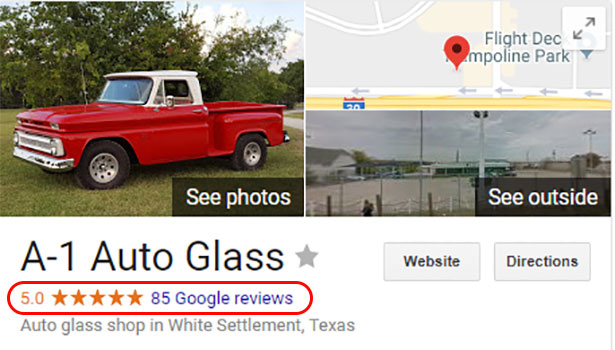
Online reviews are influencing consumer buying decisions more today than ever before.
Look at the current statistics about how consumers use reviews:
- Online reviews are the most important factor for local search engine rankings, according to a study by the University of California Irvine, LocalSEO Guide and PlacesScout. They found reviews, and keywords used within them, impacted local search engine rankings more than any other factor. Many other studies confirm these findings.1
- Reviews help close sales. The Spiegel Research Center at Northwestern University conducted a study that found reviews boost conversion rates an average of 270%. Higher priced items saw even bigger conversion rate improvements, up to 380%. This study showed conversion rates at their peak for products with ratings between 4.0 and 4.7. These indicates that some negative reviews are not necessarily a bad thing.2
- By the end of 2015 a whopping 92% of customers had admitted to researching reviews at least once while shopping online for products and services. That number is expected to reach 100% in the very near future as checking online reviews becomes ingrained in forming our buying decisions.3
- 88% percent of consumers trust an online review as much as they would trust a recommendation from a co-worker, friend or family member.4
- Studies show 67% of consumers are influenced by online reviews.5
- Studies show that 82% of American adults will occasionally read customer ratings or reviews before purchasing items for the first time. 40% admit they always check before making an initial purchase.6 Breaking these stats down by age we see that 53% of 18- to 29-year-olds and 47% of 30- to 49-year-olds say they almost always read online reviews before making their first purchase. It seems the older crowd is not as consistent in this type of online shopping behavior. Only 34% of adults ages 50-64 and 23% of adults 65 and over regularly turn to reviews before buying.6
- The average consumer will read 11 online reviews before deciding to buy. So even if you have a few less-than-stellar reviews, it’s going to be ok. Your customer will see that the majority are positive. It also builds trust to have a few bad reviews… nobody’s perfect.7
- Google is the king of reviews. Over 63% of consumers report that they will check reviews on Google before visiting a business. Facebook is the second most popular review resource. It’s websites that are dedicated to reviews that are falling behind. Websites like Yelp and Trip Advisor.8
- Recency matters. Nearly half of all people (44%) say a review must be written within one month to be relevant.9
- Reviews are more popular than discounts and pricing. A recent study showed 50% look at reviews, while only 34% look at deals.10
- A study by Yotpo that involved 30,000 businesses concluded that adding user reviews directly on their company websites, businesses saw a 45% increase in search engine traffic.11
- A Bright Local Study on the impact of reviews and ratings on search click through (response) rates found that displaying star ratings on the search engine results page can increase response rates 25%. Call us for details on how to display star ratings on search engine results pages.12
- Every time your star rating increases by one, a 5-9% increase in revenue is realized. The simple fact is that good reviews increase leads and sales.13
- A University of Colorado study shows a correlation between the quantity of reviews and consumer perception of quality. The study illustrates the importance of marketing efforts to increase the quality and quantity of reviews.14
- If a product or service has excellent reviews, consumers are 31% more likely to make a purchase. That consumer confidence only grows as do the overall number of positive reviews your business receives.15
- A negative review can drive away approximately 22% of customers. Especially those negative reviews that have no response from the business. It is imperative to take action and try to rectify the situation. If nothing else, it shows your next customer that you are in the business of satisfying customers.16
- Nearly 60% of consumers use the internet and social media while shopping in a store. Half of those people are reading reviews about the products and services they are browsing. Imagine a customer that is on the fence about a purchase while in your store. They pull out their trusty smartphone and start looking for recommendations. If they see less-than-desirable reviews, they are likely going to leave, but if there are plenty of positive remarks from other customers, the sale is almost certain.17
- 68% of consumers trust reviews more when they see both positive and negative reviews. If you see a company and they only have 5-star reviews, it may seem a little suspicious. Having a few negative reviews isn’t going to ruin your reputation. A 4-star reputation is perceived as more authentic. Just make sure your negative reviews have been responded to, so readers can see you take action to correct unhappy customers.18
- More than half (53%) of consumers expect a business to respond to a negative review in less than 7 days. 63% report that at least one business has never responded to their negative reviews.19
- Studies show that 80% of consumers say the star ratings they trust the most are 4.0, 4.5, and 5 stars.20
- About 40% of American adults have talked about their experience with a business on social media according to the Pew Research Center. Sites like Facebook and Twitter harness the power of social networking and online reviews can often take the shape of a social media post rather than a direct review or star rating.21 Thankfully there are social listening tools available, so businesses can hear what is being said about them across the social media landscape.
- Asking your customers for reviews is a necessity if you want a high number of online reviews.22
Therefore, it is imperative that companies actively market to their customer base for reviews if you want that overall review count to grow.
Sources
- Local SEO Guide: http://www.localseoguide.com/guides/local-seo-ranking-factors/
- Spiegel: http://spiegel.medill.northwestern.edu/online-reviews/
- BrightLocal: https://www.brightlocal.com/learn/local-consumer-review-survey-2015/
- BrightLocal: https://www.brightlocal.com/learn/local-consumer-review-survey-2014/
- Moz: https://moz.com/blog/new-data-reveals-67-of-consumers-are-influenced-by-online-reviews
- Pew Research Center: http://www.pewinternet.org/2016/12/19/online-reviews/
- Social Barrel: http://socialbarrel.com/30-digital-marketing-statistics-shouldnt-miss-infographic/53453/
- ReviewTrackers: https://www.reviewtrackers.com/online-reviews-survey/
- BrightLocal: https://www.brightlocal.com/learn/local-consumer-review-survey-2015/
- ReviewTrackers: https://www.reviewtrackers.com/online-reviews-survey/
- Yotpo: https://www.yotpo.com/blog/reviews-seo/
- BrightLocal: https://www.brightlocal.com/learn/review-search-click-through-study/
- Marketwatch: https://www.marketwatch.com/story/20-of-yelp-reviews-are-fake-2013-09-24?link=MW_story_latest_news
- University of Colorado: https://www.colorado.edu/business/sites/default/files/attached-files/jcr_2016_de_langhe_fernbach_lichtenstein_0.pdf
15 – 16. BrightLocal: https://www.brightlocal.com/2017/03/15/the-impact-of-online-reviews/
- SocialBarrel: http://socialbarrel.com/social-media-drives-holiday-shopping/53166/
- Reevo: https://blog.reevoo.com/ebook-bad-reviews-good-business/
19 – 20. ReviewTrackers: https://www.reviewtrackers.com/online-reviews-survey/
- Pew Research Center: http://www.pewinternet.org/2016/12/19/online-reviews/
- Pew Research Center: http://www.pewinternet.org/2016/12/19/online-reviews/






